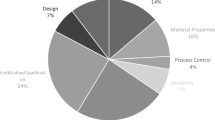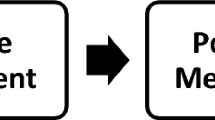Abstract
Mechanical products are usually made by assembling many parts. The dimensional and geometrical variations of each part have to be limited by tolerances able to ensure both a standardized production and a certain level of quality, which is defined by satisfying functional requirements. The appropriate allocation of tolerances among the different parts of an assembly is the fundamental tool to ensure assemblies that work rightly at lower costs. Therefore, there is a strong need to develop a tolerance analysis to satisfy the requirements of the assembly by the tolerances imposed on the single parts. This tool has to be based on a mathematical model able to evaluate the cumulative effect of the single tolerances. Actually, there are some different models used or proposed by the literature to make the tolerance analysis of an assembly, but none of them is completely and univocally accepted. Some authors focus their attention on the solution of single problems found in these models or in their practical application in computer-aided tolerancing systems. But none of them has done an objective and complete comparison among them, analyzing the advantages and the weakness and furnishing a criterion for their choice and application. This paper briefly introduces two of the main models for tolerance analysis, the vector loop and the matrix. In this paper, these models are briefly described and then compared showing their analogies and differences.
Similar content being viewed by others
References
Shen Z, Ameta G, Shah JJ, Davidson JK (2005) A comparative study of tolerance analysis methods. J Comput Inf Sci Eng 5(3):247–256 doi:10.1115/1.1979509
Hong YS, Chang TC (2002) A comprehensive review of tolerancing research. Int J Prod Res 40(11):2425–2459 doi:10.1080/00207540210128242
Salomons OW, van Houten FJAM, Kals HJJ (1998) Current status of CAT systems. In: ElMaraghy HA (ed) Geometric design tolerancing: theories, standards and applications. Chapman & Hall, London, pp 438–452
Prisco U, Giorleo G (2002) Overview of current CAT systems. Integr Comput Aided Eng 9(4):373–397
Standard ASME (1994) Dimensioning and tolerancing. ASME Y14.5M-1994, American Society of Mechanical Engineers, New York
ISO Standard (1985) ISO 8015: fundamental tolerancing principle
Chase KW. Tolerance Analysis of 2-D and 3-D Assemblies (automated method). http://adcats.et.byu.edu/home.php
Chase KW, Gao J, Magleby SP (1995) General 2-D tolerance analysis of mechanical assemblies with small kinematic adjustments. J Des Manuf 5(4):263–274
Chase KW, Gao J, Magleby SP, Sorensen CD (1996) Including geometric feature variations in tolerance analysis of mechanical assemblies. IIE Trans 28(10):795–807
Chase KW, Magleby SP, Gao J (1996) Tolerance analysis of 2-D and 3-D mechanical assemblies with small kinematic adjustment. http://adcats.et.byu.edu/home.php
Gao J, Chase KW, Magleby SP (1998) Generalized 3-D tolerance analysis of mechanical assemblies with small kinematic adjustments. IIE Trans 30:367–377
Faerber PJ (1999) Tolerance analysis of assemblies using kinematically derived sensitivities. ADCATS Report No. 99-3, http://adcats.et.byu.edu/home.php
Nigam SD, Turner JU (1995) Review of statistical approaches to tolerance analysis. Comput Aided Design 27(1):6–15
Glancy CG, Chase KW (1999) A second order method for assembly tolerance analysis. In: Proceedings of the 1999 ASME Design Engineering Technical Conference, September 12–15, 1999, Las Vegas, Nevada, DETC99/DAC-8707
Gao J, Chase KW, Magleby SP (1998) Global coordinate method for determining sensitivity in assembly tolerance analysis. http://adcats.et.byu.edu/home.php
Salomons OW, Haalboom FJ, Jonge Poerink HJ, van Slooten F, van Houten FJAM, Kals HJJ (1996) A computer aided tolerancing tool II: tolerance analysis. Comput Ind 31:175–186 doi:10.1016/0166-3615(96)00047-4
Desrochers A (1999) Modeling three dimensional tolerance zones using screw parameters. In: Proceedings DETC 25th Design Automation Conference, September 12–15, Las Vegas, DETC99/DAC-8587
Desrochers A, Rivière A (1997) A matrix approach to the representation of tolerance zones and clearances. Int J Adv Manuf Technol 13:630–636 doi:10.1007/BF01350821
Clément A, Riviére A, Serré P, Valade C (1998) The TTRSs: 13 constraints for dimensioning and tolerancing. In: ElMaraghy HA (ed) Geometric design tolerancing: theories, standards and applications. Chapman & Hall, London, pp 123–131
Author information
Authors and Affiliations
Corresponding author
Rights and permissions
About this article
Cite this article
Marziale, M., Polini, W. A review of two models for tolerance analysis of an assembly: vector loop and matrix. Int J Adv Manuf Technol 43, 1106–1123 (2009). https://doi.org/10.1007/s00170-008-1790-0
Received:
Accepted:
Published:
Issue Date:
DOI: https://doi.org/10.1007/s00170-008-1790-0




